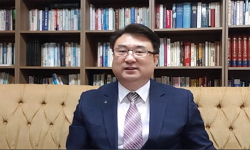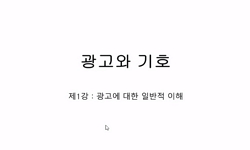The study is to show that worship symbols might damage its purpose to express the holiness of God, when they are abused by the human will to power. The author presupposes that the essence of Christian worship is to reveal the holiness of God. All the ...
http://chineseinput.net/에서 pinyin(병음)방식으로 중국어를 변환할 수 있습니다.
변환된 중국어를 복사하여 사용하시면 됩니다.
- 中文 을 입력하시려면 zhongwen을 입력하시고 space를누르시면됩니다.
- 北京 을 입력하시려면 beijing을 입력하시고 space를 누르시면 됩니다.

Political Distortions of the Divine Holiness in Korean Church Services : Semiotic Analyses of the Distortion of ‘Transcendence-Consecration-Awe’ into ‘Exclusion-Discrimination-Oppression’
한글로보기https://www.riss.kr/link?id=A108678451
- 저자
- 발행기관
- 학술지명
- 권호사항
-
발행연도
2023
-
작성언어
English
- 주제어
-
KDC
230
-
등재정보
KCI등재
-
자료형태
학술저널
-
수록면
7-40(34쪽)
- 제공처
- 소장기관
-
0
상세조회 -
0
다운로드
부가정보
다국어 초록 (Multilingual Abstract)
The study is to show that worship symbols might damage its purpose to express the holiness of God, when they are abused by the human will to power. The author presupposes that the essence of Christian worship is to reveal the holiness of God. All the symbols of Christian liturgy are supposed to serve that essential purpose. The author, however, suspects that such an intention might operate as a superficial pretext for the other hidden intention. It is, the author calls, ‘the human will to power,’ which means a deep desire for self-glorification through getting the self-centered power to dominate others. Unfortunately, the author argues, the liturgical symbols of Christian worship can provide one of the most dangerous opportunities for realizing the human will to power. For this critical argument, the author uses mainly two methodological approaches: a semiotic analysis and an ethnographic participatory observation. For the semiotic analysis, the author takes three stages. First, she translates the ‘holiness’ of God into the theological categories of ‘transcendence,’ ‘consecration,’ and ‘awe.’ Next, these are made to correspond to their distorted categories: exclusion, discrimination, and oppression. Lastly, the inter-relationship of the two category groups is analyzed in terms of the four semiotic forms: space, time, visual symbol, and language. The author has applied the semiotic analytic tools to observing, describing, and interpreting the actual symbolic operations of 10 Korean church worship services. The author selected the ten churches by some rigorous criteria and participated in each worship to observe it personally. The author’s semiotic interpretations of the observed and analyzed have demonstrated how seriously the worship symbols, consciously or unconsciously, serve the human will to power, distorting the holiness of God ironically in the name of the holiness of God. The study helps to discover and understand what are hidden below facial phenomena, which general sociological approaches cannot point out. The weak point of the study is that the researcher’s subjective interpretation binds it. The author must accept that criticism while defending that all studies cannot transcend their own hermeneutic horizons.
목차 (Table of Contents)
- I. Introduction
- Ⅱ. God's 'Holiness' and Human's Will to Power
- 1. God's 'Holiness' as a Theological Idea
- 2. 'God's Holiness' as an Experience Phenomenon and Its Analogical Languages
- 3. The Experience of God's 'Holiness' Distorted by The Human Will to Power: Exclusion, Discrimination, and Oppression
- I. Introduction
- Ⅱ. God's 'Holiness' and Human's Will to Power
- 1. God's 'Holiness' as a Theological Idea
- 2. 'God's Holiness' as an Experience Phenomenon and Its Analogical Languages
- 3. The Experience of God's 'Holiness' Distorted by The Human Will to Power: Exclusion, Discrimination, and Oppression
- III. Methodology of The Study : Ethnographic Participatory Observation and Semiotic Analysis
- 1. Ethnographic Participatory Observation
- 2. Semiotic Analytic Interpretation
- 3. Sign Categories Referring to 'Transcendence-Consecration-Awe' : Space, Time, Visual Symbol, Language
- 4. Criteria for Selecting the 10 Churches to Observe
- IV. Signs of ‘Transcendence-Consecration-Awe’ in Korean Church Liturgy: Analysis of Spatial, Temporal, Visual, Linguistic Signs of 10 Churches
- 1. Spatial Signs
- 2. Temporal Signs
- 3. Visual Signs
- 4. Linguistic Signs
- 5. Comprehensive Meanings of the Analyses of 10 Church Worship Signs
- Ⅴ. Distortions of the Signifiers of 'Transcendence-Consecration-Awe' into the Signified of 'Exclusion-Discrimination-Oppression'
- 1. Distortions in Spatial Signs
- 2. Distortions In Temporal Signs
- 3. Distortions of Visual Signs
- 4. Distortions in Linguistic Signs
- Ⅵ. Discussion and Conclusion
- Bibliography
- Abstract
동일학술지(권/호) 다른 논문
-
The Characteristics of Sanctification Theory Appeared in John Wesley's Sermon on the Beatitudes
- 한국실천신학회
- Bae, Myung-Ji
- 2023
- KCI등재
-
Pentecostal Orthodoxy and Relationality
- 한국실천신학회
- Kim, Jang-Yob
- 2023
- KCI등재
-
Psychoanalytic Approach to the Centering Prayer : Focused on Winnicott’s and Keating’s Ideas
- 한국실천신학회
- Moon, Sung-Il
- 2023
- KCI등재
-
Futuristic Aspect and Analysis of the Biblical Counseling
- 한국실천신학회
- Jeon, Jeseph
- 2023
- KCI등재




 eArticle
eArticle







